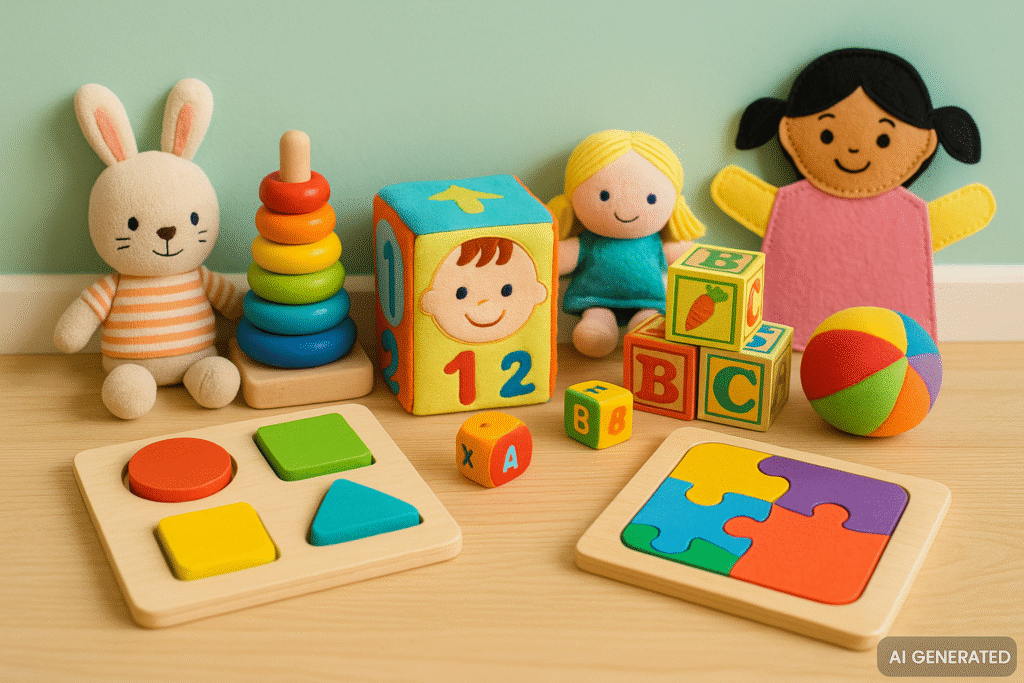
The Problem and Motivation behind:
“I saw children around me getting addicted to mobile screens, refusing to play outside, and even skipping school. I wanted to create a solution that would bring back the joy of real playtime.” – Shahanaz.
Shahanaz Parvin (18 year old) witnessed firsthand how her four-year-old relative developed severe eye problems due to excessive screen time. Her mother used to go to, leaving the little girl to spend entire days on phone. Eventually, her child’s condition became so severe that she had to be taken to the capital for medical treatment, which was both costly and emotionally distressing for the family. This incident made Shahanaz, and her team realise that children, in today’s digital world, are spending more time on mobile screens than ever before. For many, a mobile phone has become their main source of entertainment, leading to serious health and developmental problems.
The Innovative Solution:
“Our goal is simple: to create toys that are so fun and engaging that children forget about mobile phones completely.” – Shahanaz
When Shahanaz and her team joined the Youth Innovation Lab, they chose to address the problem of mobile addiction for children. Through a Design Thinking process, they gathered information to understand the factors that contributed this problem, and generate ideas to them. Their solution was focused on creating safe, engaging, and educational toys and learning materials that encourage hands-on play and learning. They designed a prototype of that is:
- age-appropriate – Designed for children aged 0-5 years to support cognitive and motor skill development.
- interactive – Encouraging children to explore, play, and engage with their environment, rather than relying on screens
- learning-based– Including puzzles, puppets, dolls, and colour-identification games
- safe and affordable – crafted from safe, non-toxic materials, ensuring that playtime is healthy and joyfultext.
- gender inclusive – Producing toys for both boys and girls, breaking stereotypes around play.
When Shahanaz and her team tested their educational toys, they received positive feedback from parents that their children loved their educational toys and spent more time playing with real toys instead of spending their time on screens. Additionally, parents noted that these toys made playtime more education for their children, learning colours, shapes, and problem-solving skills through puzzles and interactive play.
“Before joining the Innovation Lab, I had an idea but didn’t know how to bring it to life. They gave me direction, training, and belief in my business.” – Shahanaz
Lessons Learned and Addressing Challenges
Shahanaz and her team got a seed grant for the Youth Innovation Lab, that helped them to access resources and start toy production. They also received business skills training that helped them with planning, budgeting, and managing operations of their solution. They benefited also for mentorship support in advocacy and engaging with market, facilitating their connection with parents and schools to spread awareness about screen-free playtime.
Reflecting on their learning, Shahanaz identified three key lessons learned, as follow:
- Convincing parents to trust in toys over technology – Parents believed mobile screens were a natural part of modern childhood. To address that, the team conducted community workshops, demonstrating how their toys and learning material engaged children better than screens.
- Being perseverant with family opposition: Shahanaz’s own family doubted the idea, warning her that a toy-making business wouldn’t be successful. However, Shahanaz remained determined and kept pushing forward, proving them wrong as the solution being recognised in the Youth Innovation Lab and gained positive feedback from parents. Her family’s opposition transformed to support after realising the value of her
- Overcoming financial barriers by local partnership – Toys production required resources and investment, which the group lacked initially. To address that, they partnered with a local institute, which provided support for puppet-making and manufacturing.
Next steps and Future Aspirations
“I want to see Shishur Hashi become a brand known for making childhood joyful and screen-free. I want to train more women and make this a business that supports families and healthy development.” – Shahanaz
Shahanaz and her team have a vision to expand further by opening a daycare centre, where children can engage in structured play and learning activities, ensuring a safe and nurturing environment. They have aim to take the following steps:
- Expanding Production– Increasing the range of toys and improving quality.
- Opening a Toy Shop – Creating a dedicated store where parents can buy child-friendly, screen-free toys.
- Launching a Daycare Centre – Providing structured play and learning activities for young children.
Expanding the Toy Range – Introducing more educational games, storytelling puppets, and handmade learning materials.